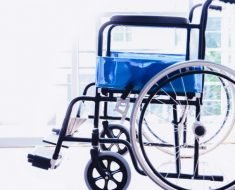Content warning: This story deals with the neglect and abuse suffered by children at Canada’s Indian residential schools. People affected by the schools can call the Canadian Residential School Crisis Line at 1-866-925-4419 for support.
The discovery in recent months of more than 1,300 unmarked graves at the sites of former indigenous residential schools in Canada has brought an ugly chapter of the country’s history back into the spotlight. Residential school survivors are sharing their stories at events across the country as part of the first National Day for Truth and Reconciliation on Sept. 30. The new federal holiday honors the children lost and survivors of residential schools, their families, and their communities.
The Truth and Reconciliation Commission, which investigated the residential school system in 2015, found that about half the deaths recorded were attributed to tuberculosis (TB).
Most TB deaths at the schools occurred in the late 1800s and early 1900s, when TB was a major public health issue in Canada and there were no reliable drug treatments. But that does not mean the deaths were unavoidable or unexpected, says Elizabeth Rea, MD, an associate medical officer of health at Toronto Public Health and a member of the steering committee for Stop TB Canada.
“The risk factors for TB were well-known in the medical community at the time,” she says.
Deadly Rates of TB
Those conditions ― crowding, poverty, malnutrition, and poor ventilation ― were the norm in Indigenous communities and, especially, residential schools, which contributed to disproportionate rates of TB.
In the 1930s and 1940s, the annual TB death rate in Indigenous populations was around 700 per 100,000 people ― about 20 times higher than in the population as a whole ― but in residential schools, it was an astronomical 8,000 per 100,000.
http://www.museumofhealthcare.ca/explore/exhibits/breath/tb-in-canada.html
The Canadian government was aware of this disparity, and its cause. In 1907, Peter Bryce, MD, chief medical health officer at the Department of Indian Affairs, investigated the schools and reported that it was “almost as if the prime conditions for the outbreak of epidemics had been deliberately created,” and he pushed for the system to be overhauled to improve conditions.
But Bryce ― who was president of the American Public Health Association in 1900 and drafted Canada’s first Public Health Act, which went on to be used as a model across North America ― was ignored by the government. His report was suppressed, his funding was cut, and he was eventually pushed out of the public service.
A National Crime: Reported
“The government didn’t refute his findings, they just chose not to help, to let these kids die,” says Cindy Blackstock, PhD, executive director of the First Nations Child and Family Caring Society of Canada.
Bryce was not the lone whistleblower, according to Blackstock; plenty of people at the time knew about the problem and understood that it was wrong. When his 1907 report was leaked to the press, it prompted outraged headlines in newspapers and suggestions from lawyers that the government was guilty of manslaughter.
But all that had little impact on government policy. In response to Bryce’s report, Duncan Campbell Scott, head of Indian Affairs, wrote: “It is readily acknowledged that Indian children lose their natural resistance to illness by habituating so closely in the residential schools and they die at a much higher rate than in their villages. But this alone does not justify a change in the policy of this department, which is geared towards a final solution of our Indian problem.”
Although the last residential school closed in 1997, the effect the system had on survivors and their families is ongoing. TB is still a serious public health issue in Indigenous communities, especially those in the Arctic, but the history of neglect and abuse at residential schools, hospitals, and TB sanatoriums has left a legacy of mistrust toward medicine among the Indigenous, says Tina Campbell, a registered nurse and TB adviser at the Northern Inter-Tribal Health Authority.
Inter-Generational Trauma
The damaging legacy of the schools goes far beyond TB care, says Angela White, executive director of the Indian Residential School Survivors Society and a member of the Snuneymuxw First Nation. Survivors often turn to alcohol, drugs, or suicide to deal with their trauma, which in turn inflicts many of the same problems on subsequent generations.
“Survivors have been holding ugly truths in so long, and that leads to other things that are not always healthy,” she says.
The Bishops of Canada on Monday apologized for the church’s role in the abuses at the schools and pledged $30 million to support Indigenous reconciliation projects for residential school survivors.
The country is moving in the right direction in terms of reconciliation with Indigenous peoples, says White, but progress is slow, and the actions of the government rarely match its promises. For their part, survivors want to ensure that the next generation doesn’t have to experience what they went through.
“They want to break the cycle and complete their healing journey,” she says.
Sources
Elizabeth Rea, MD, associate medical officer of health, Toronto Public Health.
Cindy Blackstock, PhD, executive director, First Nations Child and Family Caring Society of Canada
Tina Campbell, registered nurse; TB adviser, Northern Inter-Tribal Health Authority.
Angela White, executive director, Indian Residential School Survivors Society.
Source: Read Full Article





